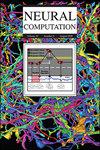多样性消除了感觉运动控制中的成分限制。
IF 2.1
4区 计算机科学
Q3 COMPUTER SCIENCE, ARTIFICIAL INTELLIGENCE
引用次数: 0
摘要
人类感觉运动控制在系统水平上是非常快速和准确的,尽管在组件水平上存在严重的速度-精度权衡。在这两个层次上,速度和精度之间的差异是一个悖论。同时,在神经、骨骼和肌肉中,速度精度权衡、异构性和分层架构无处不在,但它们只是使用特定领域的模型孤立地进行了研究。在本文中,我们开发了一个机制模型,用于组件速度-精度权衡如何约束与Fitts定律一致的感觉运动控制。该模型表明,在感觉运动控制中,组分之间的多样性限制了单个组分的局限性。这种多样性激活的最佳点(DESSs)在自然界中无处不在,解释了为什么生物系统的组成部分存在巨大的异质性,以及自然选择如何通过使用不完美的组成部分来快速准确地进化系统。本文章由计算机程序翻译,如有差异,请以英文原文为准。
Diversity Deconstrains Component Limitations in Sensorimotor Control
Human sensorimotor control is remarkably fast and accurate at the system level despite severe speed-accuracy trade-offs at the component level. The discrepancy between the contrasting speed-accuracy trade-offs at these two levels is a paradox. Meanwhile, speed accuracy trade-offs, heterogeneity, and layered architectures are ubiquitous in nerves, skeletons, and muscles, but they have only been studied in isolation using domain-specific models. In this article, we develop a mechanistic model for how component speed-accuracy trade-offs constrain sensorimotor control that is consistent with Fitts’ law for reaching. The model suggests that diversity among components deconstrains the limitations of individual components in sensorimotor control. Such diversity-enabled sweet spots (DESSs) are ubiquitous in nature, explaining why large heterogeneities exist in the components of biological systems and how natural selection routinely evolves systems with fast and accurate responses using imperfect components.
求助全文
通过发布文献求助,成功后即可免费获取论文全文。
去求助
来源期刊

Neural Computation
工程技术-计算机:人工智能
CiteScore
6.30
自引率
3.40%
发文量
83
审稿时长
3.0 months
期刊介绍:
Neural Computation is uniquely positioned at the crossroads between neuroscience and TMCS and welcomes the submission of original papers from all areas of TMCS, including: Advanced experimental design; Analysis of chemical sensor data; Connectomic reconstructions; Analysis of multielectrode and optical recordings; Genetic data for cell identity; Analysis of behavioral data; Multiscale models; Analysis of molecular mechanisms; Neuroinformatics; Analysis of brain imaging data; Neuromorphic engineering; Principles of neural coding, computation, circuit dynamics, and plasticity; Theories of brain function.
 求助内容:
求助内容: 应助结果提醒方式:
应助结果提醒方式:


